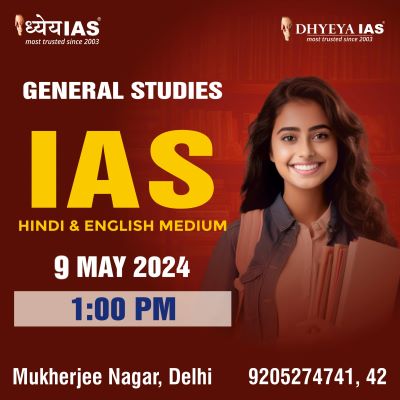Current Affairs Brain Booster for UPSC & State PCS Examination
Topic: NCAER Report

Why in News?
- A survey by the National Council of Applied Economic Research (NCAER) has shown that timely delivery of weather advisories to farmers had a significant impact on their income.
- The survey was done to gauge the economic impact of India’s investments on the National Monsoon Mission (NMM) and HighPerformance Computing Facilities (HPC).
Report
- Name of the survey report: “Estimating the economic benefits of Investment in Monsoon Mission and High-Performance Computing facilities”
- Study was commissioned by Ministry of Earth Sciences (MoES), Government of India.
- NCAER study was based on a face-to-face survey of 6,098 respondents including 3,965 crop farmers, 757 marine fishermen, and 1,376 livestock owners.
- Along with this, responses from 2 lakh farmers were also collected through interactive voice response system (IVRS) to validate the findings of the face-to-face survey
- Data for both pre- and post-monsoon mission periods was incorporated which enabled analysis.
- A total of 173 districts across 16 states were considered for the study to appropriately represent agro-climatic zones, rain-fed areas, coverage of major crops, and incidence of extreme weather events in the country.
Findings
- It showed that farmers taking precautionary actions based on agrometeorology advisories from the government reported an increase in income of up to 50 per cent.
- For every rupee spent by the government on the NMM and HPC programs of the MoES, the country would gain economic benefits worth fifty rupees, which is 50 times more benefit on the investment over the next five years period.
- Out of the 3,965 crop farmers interviewed across 121 districts of 11 states of India, a large majority affirmed to be positively impacted by weather advisories.
- They confirmed having made changes in critical agricultural practices such as crop variety or breed, fertilizer or pesticide application schedule, irrigation or harvest time, arranging for storage, etc. to reduce losses and increase income.
- From a total of 1,376 livestock owners interviewed across 92 districts of 10 states of India, a majority reported that weather advisories bear a positive impact on their livelihood. They confirmed to be making decisions about livestock management practices such as vaccinations, modification of sheds and shelters, and fodder practices based on weather parameters issued by IMD.
- The report provides an estimated income gain of nearly 13 thousand crore rupees per year for agricultural and livestock farmers and an incremental economic benefit of nearly 48 thousand crore rupees over the next five years.
- With a total of 53 Lakh BPL line fisher-folk households, the report estimated income gains of 663 Crore rupees per year and an incremental benefit of more than two thousand Crore rupees for the next five years to fishermen alone.
National Monsoon Mission
- NMM was initiated by the MoES in 2012 with the broad objective to improve the monsoon forecasting skills in the country.
- NMM builds a working partnership between the academic and R&D organisations, both national and international and strives to improve the forecasting skills by setting up a state-of-the-art dynamic prediction system for monsoon rainfall on different time scales.
- Four MoES institutes, namely Indian Institute of Tropical Meteorology (IITM), Pune; National Centre for Medium Range Weather Forecasting (NCMRWF), Noida; India Meteorological Department (IMD); and Indian National Centre for Ocean Information Services (INCOIS) have partnered actively in this important and ambitious programme.
- The execution and coordination is undertaken by IITM, which also leads the efforts for improving the extended range and seasonal predictions. For this, IITM is collaborating with National Centers for Environmental Prediction (NCEP), USA and other MoES institutes and is working with the Climate Forecast System (CFS) model.
- NCMRWF leads the efforts for short and medium range forecasts. For this, NCMRWF is collaborating with The Meteorological Office, UK (commonly known as UK Met office) and is working with the Unified Model (UM) for seamless prediction of weather with a special focus on short and medium range forecast of monsoons.























